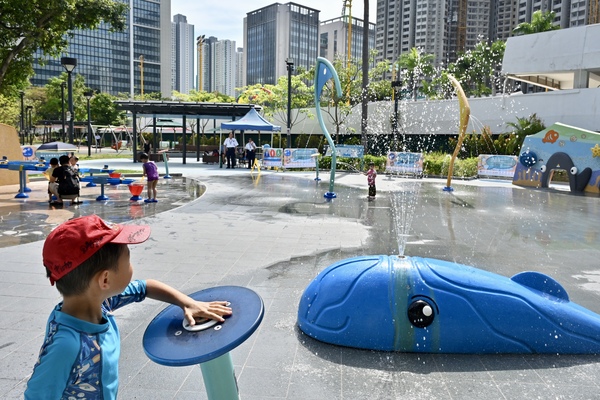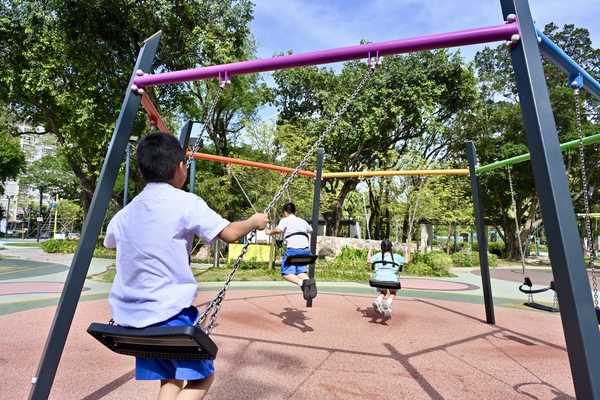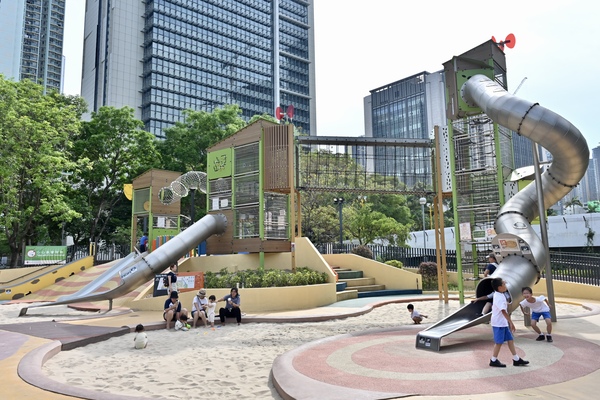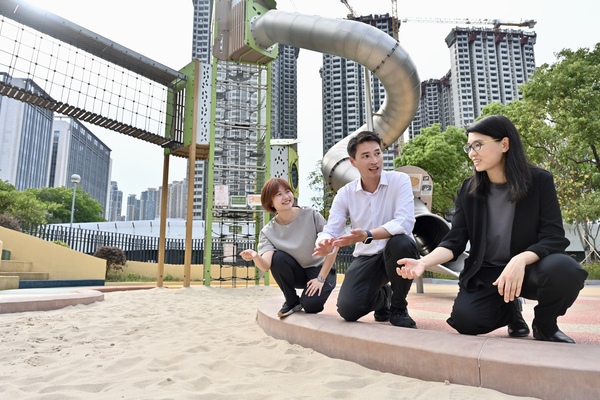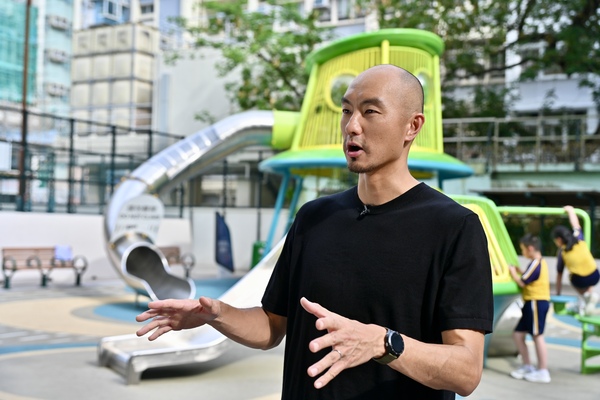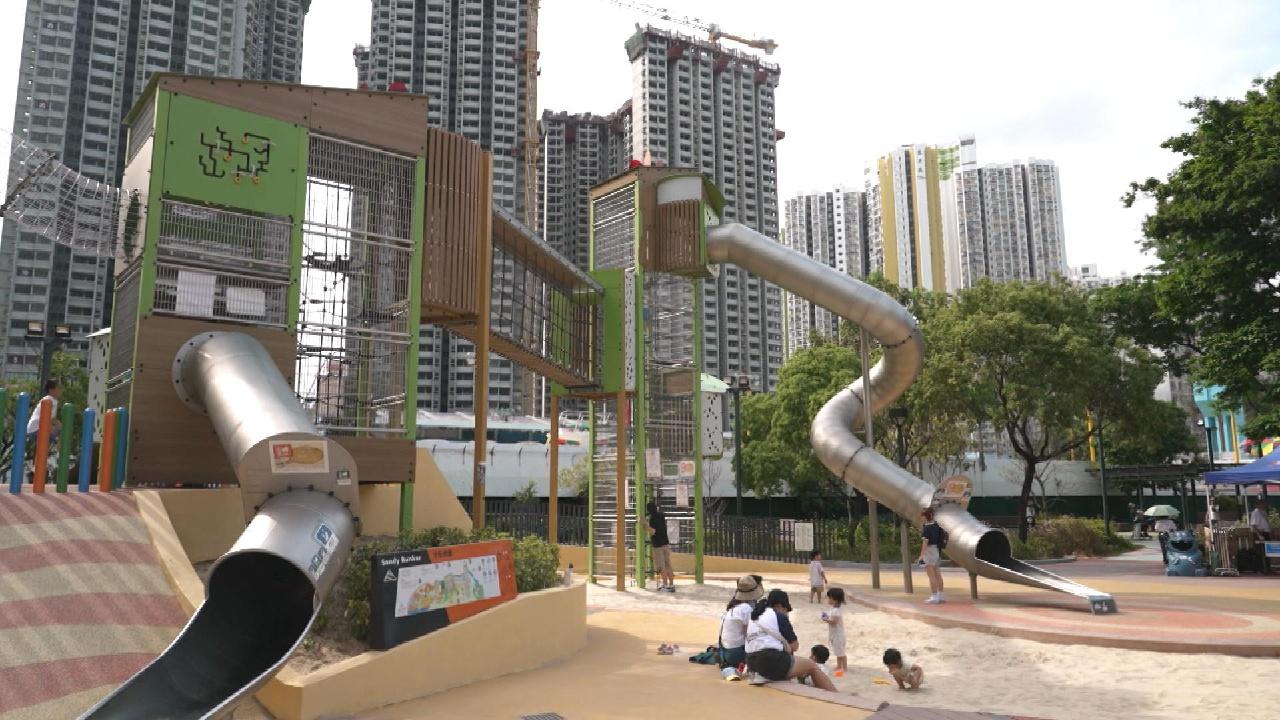Play areas transformed via kids' input
From the dunes, then into the jungle, and suddenly, an oasis comes into view. Strolling leisurely, the surroundings shift and transform before your eyes while the cheerful laughter of children playing echoes around. This is not a dream, it is a real life outdoor playground at Sham Shui Po Park, managed by the Leisure & Cultural Services Department.
Sham Shui Po Park, which has served the community for over 40 years, was recently revitalised as part of the Transformation of Public Play Spaces.
Prioritising inclusivity
Inspired by nature, the redesign features themes of water, sand, and plants, creating three zones: Sandy Bunker, Jungle Meadow and Oasis Spring. After consultation and design, which includes input from youngsters, the upgraded park has reopened, drawing many families and children to enjoy the new facilities.
The Sandy Bunker playground features a popular sand pit and a variety of slides. In addition to roller, group, and curved slides, visitors will also discover the longest spiral tube slide that exists at public playgrounds in Hong Kong. At over 6m high and 13m long, it offers a fun and interactive experience for visitors of all ages.
Nearby Jungle Meadow provides a natural play space with a face-to-face swing, rope swing, wheelchair-friendly carousel, percussion walls, and a play tunnel for hide-and-seek, fostering family fun and group play.
The Oasis Spring area offers climbing rope nets, trampolines, water play features, and sensory walls, creating a diverse adventure zone for children to explore.
Community-engaging playground
The Leisure & Cultural Services Department oversees over 680 outdoor playgrounds and by way of its Transformation of Public Play Spaces plan, the department aims to revitalise more than 170 play spaces across the city. So far, 11 projects have been completed and opened to the public.
Leisure & Cultural Services Department Senior Project Manager Vivian Ho said the department provides non-prescriptive and flexible playscapes according to the site topography, introducing natural or environmentally friendly elements, such as small climbing hills for toddlers, sand pits, water play facilities or small labyrinths that captivate children and enable them to unleash their creativity.
Architectural Services Department Senior Landscape Architect Grant Liu added that the design concept for the play space redevelopment project began with community engagement, embodying a "people-centred" design philosophy. He highlighted that the goal is to promote the idea of inclusive play in more playgrounds.
“The Spouting Whale and Octopus Fountain have water play basins and tables at different heights to allow children of all ages and those in wheelchairs to play together. As an added bonus, the tube slide is made of stainless steel, which is safe for children with hearing implants, and does not create static electricity like plastics or fiberglass slides do.”
Kid-friendly design
Tong Mei Road Children's Playground, which was recently renovated, serves as a prime example of how children were treated as the protagonists of the playgrounds because their opinions are indispensable. The playground’s design consultant initiated a participatory design programme for the renovation. It included setting up street booths, questionnaires, parent-child workshops, and design workshops specifically for children, giving the consultant a lot of inspiration.
A workshop led by the playground’s design consultant Kevin Siu provided children with a unique opportunity to create their own playground. During the event, the young participants crafted models of imaginative play areas based on their ideas.
He explained that when sharing their designs for the playground, it was evident that different groups of children, despite being unfamiliar with each other, shared common features.
“Many expressed a desire for a high platform where they could escape from a pretend shark, which included hide-and-seek zones where they could feel temporarily protected.”
The organisers were surprised by the enthusiasm and creativity displayed. In a group of over 20 children who did not know each other beforehand, more than half raised their hands when asked if they knew certain games. The response highlighted how children naturally connect through play.
The workshop served as a compelling example of how children socialise and why public play spaces are vital platforms for engaging young minds. Such environments not only stimulate creativity but also help shape their collective memories and social interactions.
